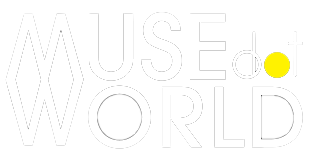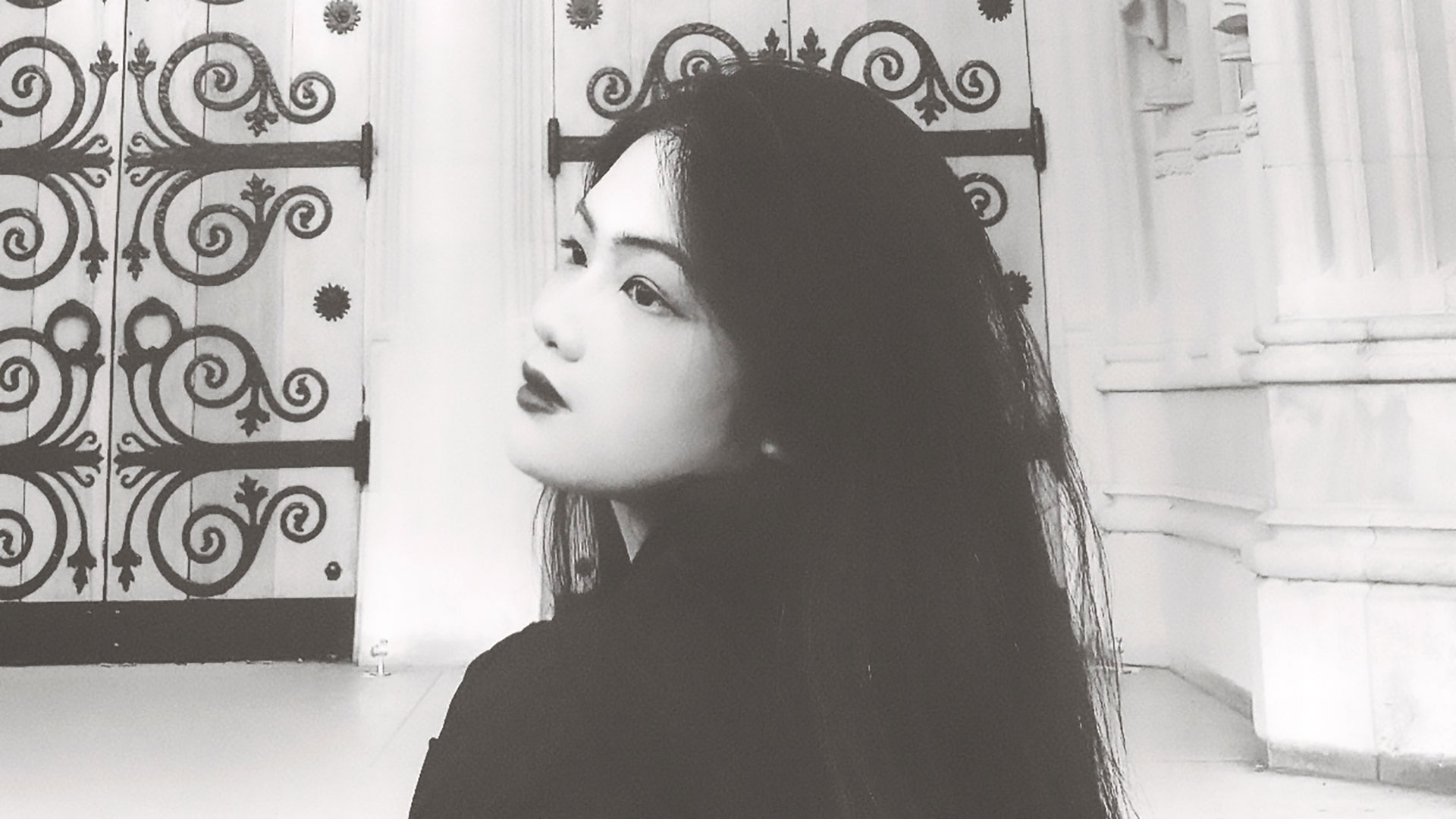Mingyong Cheng’s Beyond Characters: The Unseen Labyrinth A Journey Through Dyslexia

Qianzhuo Zeng Connects Young Riders to Sustainability with Ecooter
April 22, 2025Mingyong Cheng
Mingyong Cheng is a new media artist and creative technologist based between Beijing and San Diego. Her work explores generative AI and emerging media, with "Beyond Characters: The Unseen Labyrinth" (2023-2024), in collaboration with Zetao Yu, examining dyslexia through an interactive installation.
Thank you! I’m Mingyong Cheng – a new media artist and creative technologist bridging Beijing and San Diego, where I’m currently completing my PhD at UC San Diego. My work lives at the intersection of generative AI and emerging media, creating immersive experiences that reexamine how we relate to nature, technology, and our own physicality in today’s digitally saturated world.
My fascination began as a child discovering that code could be a creative medium – I’d lose track of time experimenting with early digital tools, realizing technology wasn’t just a utility but a collaborator in storytelling. This evolved into a practice where I translate life observations into interactive narratives, aiming to create those moments of resonance where someone encounters my work and thinks "I’ve felt this too, but never saw it articulated." It’s this dialogue between human experience and technological possibility that continues to drive my exploration.
As this project was created by just a two-person team (collaborated with Zetao Yu), being recognized is a huge honor and validation of our efforts. It highlights the potential of small, dedicated groups to create meaningful work that resonates with others. This recognition has encouraged us to further explore new creative directions and expand on our ideas.
We’ve also been focusing on bringing this piece to more diverse audiences and venues while continuing to create work collaboratively as a small but passionate team.
Experimentation plays a crucial role in my creative process, helping me test concepts, explore technologies, and discover new inspirations. Since 2020, I've been working with generative AI technology, and despite not having a formal technical background, I've consistently experimented with various architectures and workflows that align with my creative interests.
Some of my most meaningful discoveries have come directly from experimentation. For instance, in our collaborative project Fusion: Landscape and Beyond with Xuexi Dang, Xingwen Zhao, and Zetao Yu, the initial concept emerged from my experiments with text-to-image generation.
I found the generative process itself fascinating and noticed potential connections to how human memory works. Through discussions with my collaborators, this observation evolved into a deeper exploration of cultural memory.
Experimentation is especially vital when working with generative AI, as different algorithms, models, and workflows can produce vastly different results. Through extensive testing and exploration, I've been able to understand both the limitations and possibilities of these "creative partners," which has been crucial in bringing my visions to life.
This hands-on approach to learning and discovery continues to shape how I approach each new project.
My project "Under Virus" probably stands out as my most unexpected source of inspiration. During the pandemic, I found myself fascinated by the strange reality unfolding in news headlines, watching everyday items like toilet paper, plastic gloves, and hand sanitizer suddenly become precious commodities.
It was both fascinating and surreal to see how these basic items, things we barely thought about before, became the center of global attention and anxiety.
What really drew me in was this complete flip in how we valued ordinary things. The project became a way to explore this bizarre moment when the mundane became extraordinary, revealing so much about how we behave as a society under pressure.
It turned into something bigger than just documenting panic buying—it became a reflection of our shared experience during an unprecedented time.
One thing I wish more people understood about the design process is the crucial role of research and thinking time. Many assume design is primarily about visual aesthetics or jumping straight into production, but the real work begins long before any visual elements are created.
The hours spent understanding core problems, researching context, and exploring different approaches are just as essential as the final execution. It's like building a house: you need a solid foundation before adding the visible structures. Without this deeper understanding and thorough research phase, we risk creating superficially attractive solutions that don't actually solve the real problems or meet genuine user needs.
This thoughtful preparation phase, though often unseen by clients or audiences, is what transforms initial ideas into meaningful and effective design solutions rather than just visually pleasing ones.
As a creative technologist working on commissioned projects and visual designer working on collaborative performance, I've learned that balancing client expectations with creative vision requires clear communication and a structured approach.
The first step is always to understand and appreciate the client's expectations while establishing the project's core objectives. This foundation helps both parties align on what success looks like.
When clients provide space for creative exploration, I follow a collaborative process: I develop initial drafts, gather feedback during the middle stages, and then refine the work toward the final version. This iterative approach allows me to weave my creative ideas into the project while ensuring we're meeting the client's goals.
Beyond meeting the basic requirements, I often experiment with ways to enrich the project, but only after ensuring the fundamental expectations are being met.
This balance works best when there's open dialogue throughout the process. By keeping clients involved in the development stages, they feel part of the creative journey, and I can introduce innovative elements while staying within their comfort zone. It's about finding that sweet spot where their vision and my creative exploration can coexist and enhance each other.
The most challenging part of the process was during the design stage. I struggled with how to effectively translate my motivation into an artwork inspired by the reading disabilities that both my friend and I have experienced. The challenge was not only personal but also conceptual—how to convey the idea of cognitive diversity in a way that resonates with a broader audience.
I had to think deeply about how to design an interactive experience that does more than just communicate the struggles of reading difficulties. It needed to foster empathy and understanding while providing an engaging, meaningful interaction for users.
To overcome this, I focused on extensive research into cognitive diversity, exploring different ways people process information and how design could incorporate these differences. I experimented with various interactive elements, testing how they could reflect the challenges of reading disabilities while remaining accessible and impactful.
Feedback played a crucial role in this process; I relied on input from people with similar experiences and audiences unfamiliar with the subject to ensure the piece effectively bridged the gap between personal storytelling and universal understanding.
When I hit a creative block, I usually take a short break to refresh my mind and gain a new perspective. For me, the process of recharging revolves around three key elements: experience, reading, and reflection.
Experience involves immersing myself in life—whether it’s spending time in nature, observing daily moments, or exploring works that resonate deeply with me. These experiences recharge my creativity by allowing me to reconnect with what touches me emotionally.
Reading isn’t limited to text; it encompasses gathering inspiration through various mediums like visuals, literature, audio, or even unrelated content. It’s about expanding my understanding and exposing myself to new ideas or emotions.
Reflection ties everything together. I take time to think about how an experience or information affected me, why it resonated, and what it inspires in my creative practice. This helps me build connections and uncover fresh insights, rekindling my creativity with purpose.
My works are always a reflection of my thoughts, values, or personal experiences. They serve as a way to materialize intangible ideas and transform them into something tangible and impactful. For instance, in my project Beyond Characters, the inspiration came from my personal struggles with reading disabilities, which were later recognized as part of a larger cognitive challenge.
This personal experience motivated me to design an interactive piece that not only expressed my own difficulties but also highlighted the broader concept of cognitive diversity.
Through this project, I wanted to create an experience that fosters understanding and empathy for those with similar struggles, turning my personal challenges into a meaningful artistic expression. My work often seeks to balance self-reflection with social awareness, using my own values and experiences as a starting point to address larger, universal themes.
Keep exploring and don't be afraid to fail. I always tell aspiring designers that success isn't just about mastering the latest tools or following trends. It's about finding your unique voice and perspective. When I started my journey, I came from a background in documentary filmmaking and journalism, which seemed quite different from computational design. But those storytelling skills turned out to be invaluable in my work with technology and computational media.
Learn from every experience, even the ones that might seem unrelated to design at first. My background in telling others' stories through documentaries actually helped shape how I approach computational art today. Be curious about different fields and don't limit yourself to just one medium or discipline. Some of the most interesting design work happens at the intersection of different areas.
Most importantly, stay true to what genuinely interests you. Success comes from authentic passion and dedication to your craft, not from following someone else's path. Start small, keep learning, and remember that every experienced designer was once a beginner too.
If I could collaborate with any designer or artist, past or present, I would choose Andy Warhol. Warhol was my artistic inspiration during my early exploration in art, especially in the way he examined everyday objects and elevated them into iconic pieces with deep cultural commentary.
His ability to find beauty and meaning in the mundane profoundly influenced my approach to design, teaching me to look beyond the surface and uncover the hidden narratives within routine, overlooked items.
People often ask me when I started working with technology and computational media, and I like this question because it reminds me of my initial passion for design and art while also reinforcing my dedication to continuing in this field.
My journey began during my undergraduate studies, where I was trained in video production, documentary filmmaking, and journalism. Telling the stories of others in those years was incredibly inspiring, but I always felt a pull to explore something more personal... a way to express myself.
When I came to the U.S. for my MFA, I rediscovered my love for computational media, something I had been fascinated with since I was a child. Taking classes in computational art and related fields at Duke rekindled that deep interest, and from there, I began to teach myself new technologies and techniques.
That experience of being surrounded by amazing mentors at Duke and UCSD was transformative. They guided me and encouraged me to merge my background in storytelling with computational tools. This combination allowed me to find ways to express not only stories about others but also my own experiences, emotions, and ideas through innovative platforms.
That's what inspires the work I do today: a blend of storytelling, self-expression, and technology, letting me explore connections between art and computation.
Mingyong Cheng
Mingyong Cheng is a new media artist and creative technologist based between Beijing and San Diego. Her work explores generative AI and emerging media, with "Beyond Characters: The Unseen Labyrinth" (2023-2024), in collaboration with Zetao Yu, examining dyslexia through an interactive installation.
Explore the journey of Qianzhuo Zeng, the Silver Winner of the 2025 MUSE Design Awards. She is an independent designer and artist based in the U.S., with a background in UX and service design. She embraces creative independence and a multidimensional approach, blending function with emotional and intellectual depth.


